The Most Acidic ‘Thing’?
If I were to ask you:
“What is the most acidic thing for your body?”
Your answer might be something like “eat sugar”?.
99% of people say this, or something similar…but they’re not quite right.
Gluten? Cola? Alcohol? Ice-cream?
These are all very acid forming foods, of course.
But there is something that could potentially do a lot more damage:
STRESS.
Research has proven that stress has an incredible impact on the body.
In fact, right now, it’s something of a buzz word in the health industry as we find it being responsible for causing or contributing to a whole range of sicknesses, conditions and debilitating diseases.
But it goes further than that.
Stress has also been proven to massively impair the body’s ability to regulate your pH too, which throws in a whole lot of other problems and knock on effects that go right through the body.
But even this is only half of the story.
The other factor is that it also goes the other way! Stress doesn’t just cause acidosis – diet-induced acidosis actually causes your body to create stress internally and over produce cortisol – the stress hormone that is so powerfully detrimental when it gets out of balance.
It’s a vicious cycle where one feeds the other and the other feeds the other.
The Far-Reaching, Acidic Dangers of Stress
When we experience stress, as a one-off, short-term thing there is no problem. The body releases adrenaline and cortisol which rouses your body into action. In certain situations, particularly physical, this is fantastic. But the body cannot differentiate between physical stress (a tiger is chasing me) and imagined/emotional (the stress we most commonly feel now).
When we experience this imagined/emotional stress over and over and over, we are causing cortisol release over and over in the body, and the more you do this – the easier it becomes to turn the cortisol switch ON and the harder it becomes to switch OFF.
Chronically elevated cortisol is VERY bad news
Having a high level of cortisol in the body, over and over, day after day, can have incredibly painful and damaging effects on the body. And it’s almost ALL to do with hormones.
I don’t want to get too ‘science lesson’ here, but it’s important for you to know the basics so you can really see how important this is.
Cortisol production is complex. Most people immediately link cortisol with the adrenals, but really it’s more complicated than that.
Cortisol production is managed by three primary glands in the endocrine system:
- Hypothalamus
- Pituitary
- Adrenals
This is known as the HPA axis and gives us an early insight as to how long-term stress (aka chronically elevated cortisol) can have a very negative impact on memory, mental energy, emotions, mood and learning.
And now as we look at a level deeper than this, things quickly get worse.
Chronically elevated cortisol has been proven to have a significant influence, and be a leading contributor to:
- Digestive issues
- Auto-immune conditions
- Significant weight gain/ obesity
- Liver conditions
- Kidney disease
- Multiple cancers
- Diabetes
- Chronic fatigue
- And more
And Then It Spirals
In most of the health literature, this is where it stops – stress causes health issues. However, that isn’t really where it ends. As I mentioned above, diet-induced acidosis causes elevated cortisol…and elevated cortisol causes elevated acidity (acidosis).
So when we’re eating badly, living an unhealthy lifestyle we are causing our body to create cortisol. If we then have a source of elevated cortisol elsewhere in our lifestyle (stress from finances, work, relationships etc) we raise our cortisol and unbalance our pH.
This cycle can go on and on.
And then it goes a level deeper…
Because when you look at the issues caused by chronic elevated cortisol: leaky gut, adrenal and thyroid stress, auto-immune issues, elevated insulin, digestive issues and so on – EACH OF THESE CAN HAVE A KNOCK ON EFFECT TO OUR BODY’S ABILITY TO MANAGE CORTISOL AND BALANCE OUR PH TOO!
For instance:
- If our adrenals are out of whack this instantly impairs cortisol production
- If we have leaky gut, this causes massive inflammation in the body leading to massively increased insulin release, and thus our cortisol gets out of whack here too
- If we have increased insulin resistance, the body will rapidly form excess visceral fat cells, which leads to more inflammation
- If we have excess cortisol, this lowers the creation of thyroid hormones, which in turn leads to chronic fatigue, mental fog and more inflammation
- The increase in inflammation also contributes to an inability to effectively balance pH
- Impaired digestion,
and the malabsorption of the nutrients we consume also leads to longer-term low-grade acidosis - And the list goes on
Quite literally one thing leads to another.
And it all starts with…
It all starts with chronic stress and diet-induced acidosis. They work in tandem, giving an exponentially damaging effect on your health.
When we eat an acid-forming diet, and live and acidic lifestyle, we – through diet – raise our cortisol levels. When we live a stressful life, we raise our cortisol levels. Either can happen first, but they compound and make each other worse.
Remember – when we repeatedly switch on our cortisol production – it gets easier and easier to switch on and harder to switch off.
You have to break this cycle.
The Stress-Solution:
The solution here is twofold. We need to address this from the angle of both diet & the mental side of stress:
- Diet: to help the body to unwind the physical effects of elevated cortisol and heal the root of the now trigger-happy cortisol release, rebalance your affecting and effected hormones and glands in the endocrine system, to sooth digestion and rebalance your gut health, and to ensure that there is no diet-induced acidosis that is contributing to further, unnecessary cortisol release.
- Emotional/Mindset: to prevent your fight or flight response being triggered so easily to whatever life throws your way (or you imagine it is throwing your way). This is certainly not my area of expertise, but I can provide some pointers to some absolutely brilliant resources that have helped me in my past, and continue to help me to this day.
Preventing Stress #1: An Alkaline Diet
An acidic diet causes ‘diet-induced acidosis’ – a leading contributor to cortisol production – therefore we need to make sure our diet is alkaline-forming to undo this damage, and prevent further stress release.
Luckily, my area of expertise for the past fourteen years is: how to live an alkaline diet and make it easy!
And I am a firm believer that – before you try to do everything, you make sure you master the CORE FUNDAMENTALS of the alkaline diet.
Doing JUST these four things will move you rapidly away from diet-induced acidosis and towards the perfect pH of 7.365 (in your blood and other extracellular fluids).
At this stage, it’s important that I point out a few nuances as to why the alkaline diet is valid, proven and works – and the real reason we’re focusing on alkaline-forming foods.
First and foremost, we are not trying to ‘make the body more alkaline’. The body will never be more alkaline. The body has very strict mechanisms to ensure your pH always stays at 7.365 in your fluids, especially and most importantly the blood.
We are not trying to force the body to go above this delicate pH balance.
What we are trying to do is give your body all of the tools it needs to MAINTAIN this pH. It is the stress of constantly trying to maintain this slight alkalinity that causes the body to break. Constantly battling to regulate and balance this pH in the barrage of an acidic diet causes the body to raise cortisol, create inflammation, stress the digestive system, tax the liver and kidneys, weaken the bones, disrupt our endocrine system, create fat cells, store uric acids and so on.
What we are trying to do is provide the body nourishment it needs to operate optimally, effortlessly maintaining this balance and when we do this, the body thrives and we look and feel AMAZING.
The Four Core Actions to Quickly Get Alkaline
1. Ramp Up the Greens
Most people get around 0.5-1 serves of greens each day. This is woefully low. I promise you, in my 14 years of teaching and coaching this stuff – if you can get this amount up to 5-7 serves a day your whole life will change. Practically everything else in this guide will be superseded if you can do this.
And it’s not as hard as it sounds.
The primary way, which gives you the biggest impact for the least amount of time and energy required is to have a green juice or smoothie each day.
JUST doing this will add 4-5 serves of greens to your day before you’ve even left the house in the morning.
And while you’re making one juice, you may as well make two serves and take the other serve to work with you or save it for the next day – doubling your greens OR halving your time required.
A typical green juice could include something like:
1 cucumber
2 sticks of celery
Handful of spinach
Handful of kale or other greens
1 carrot
1 bell pepper
1/2 cm turmeric or ginger
Filtered or coconut water to taste
A typical green smoothie could include something like:
1 avocado
1 cucumber
Handful of spinach
Handful of kale or other greens
1/2 bell pepper
1/2 cm turmeric or ginger
Coconut or flax oil
Nuts or seeds
Lettuce or other mild tasting greens
Filtered or coconut water to taste
Both are an unbelievably alkaline, anti-inflammatory, antioxidant-rich, stress busting start to the day that will leave you energised and brimming with vitality.
Just doing this gets you most of the way there.
And then to top up to the max greens a day you can fit in:
1. Have a Side Salad with Every Dinner or Lunch:
This is probably the easiest of them all. If you do it right. I’m not talking a Tuscan Kale Salad with Sprouted Mung Beans, Activated Almonds & Cranberries with a Citrus Dressing – as delicious as that sounds. I’m talking you grabbing two handfuls of pre-washed leaves and dressing them with either a simple lemon and olive (or flax) oil dressing – or a pre-made dressing. Simple as that. Leaves and oil basically.
Each handful is effectively a ‘serve’ of spinach (or any other leafy green).
Back in 2010 I made a photo guide to ‘what does a serve of alkaline vegetables actually look like’ and you’d be surprised at actually how small a ‘serve’ is:
This is a serve of spinach:
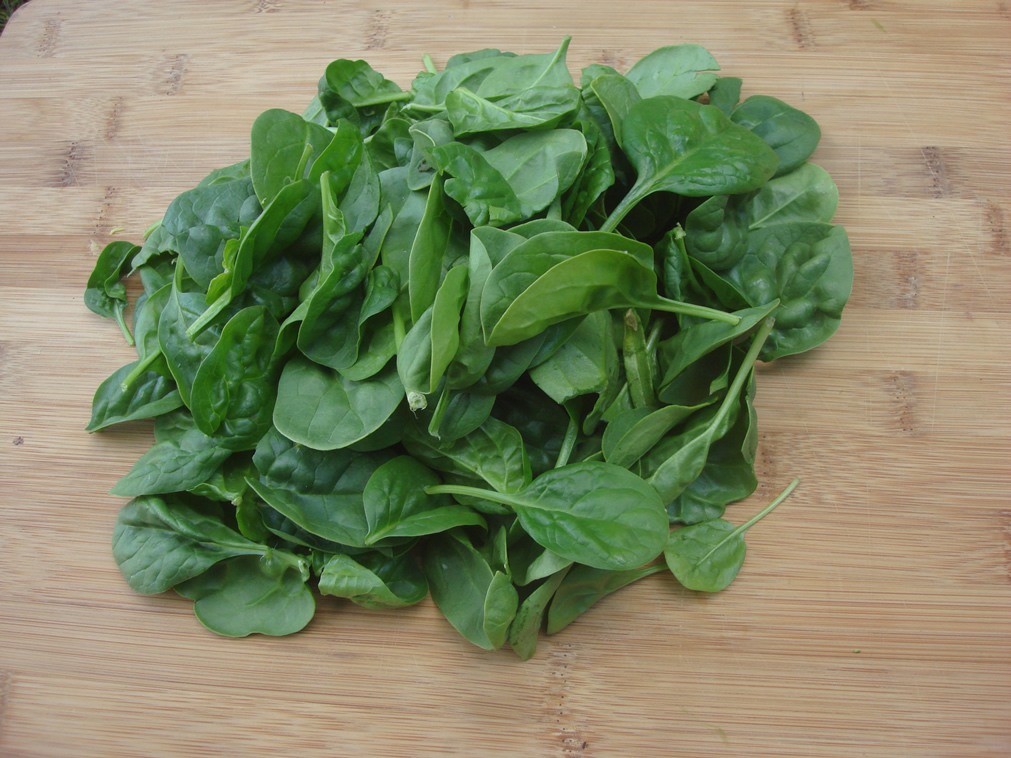
So try this one – it will add 2 serves to each meal time (i.e. 4 extra serves of leafy greens per day)
2. Dips & Sauces
Such an easy way to ‘veggie up’ any meal time. You can easily whip up a raw, flavour packed sauce to dress any dish in under five minutes. I’ve included a few of my favourite recipes below (all under a 5-minute make).
The beauty of this is that it makes simply having steamed vegetables for dinner a delicious dish! Thus giving no excuse to not eat healthy and alkaline.
You can simply blend up in a food processor or high speed blender things like tomatoes, beetroot, garlic, herbs, oils, spinach, lemon, nuts like cashews and almonds, pine nuts and so much more (obviously not all of these together, although that could be nice!) – these types of ingredients can all work to make a raw, nutrient-rich, alkalising sauce to serve over pretty much any dish.
Again – there are a couple of recipes below to get you started.
3. Shave a Head of Broccoli into Dinner:
Heh, I love this one. This is such a sneaky one.
All you have to do is take a head of broccoli and (look for youtube video or record my own) quite literally just run a knife over it to shave the tiny little bits of broccoli into any salad, sauce, pasta dish, soup, veggie dish, casserole – ANYTHING!
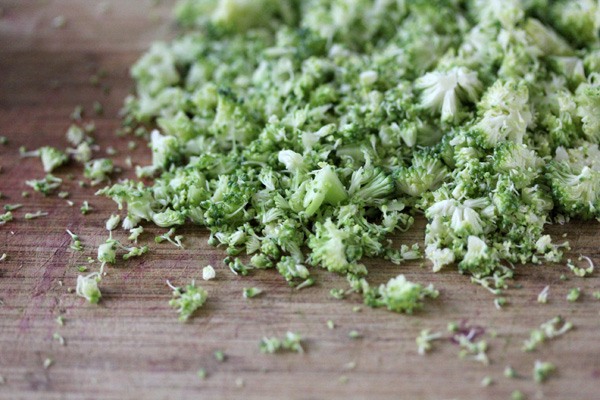
Again, from my photo serves of each of the most alkaline veggies – this is how much a ‘serve’ of broccoli is:
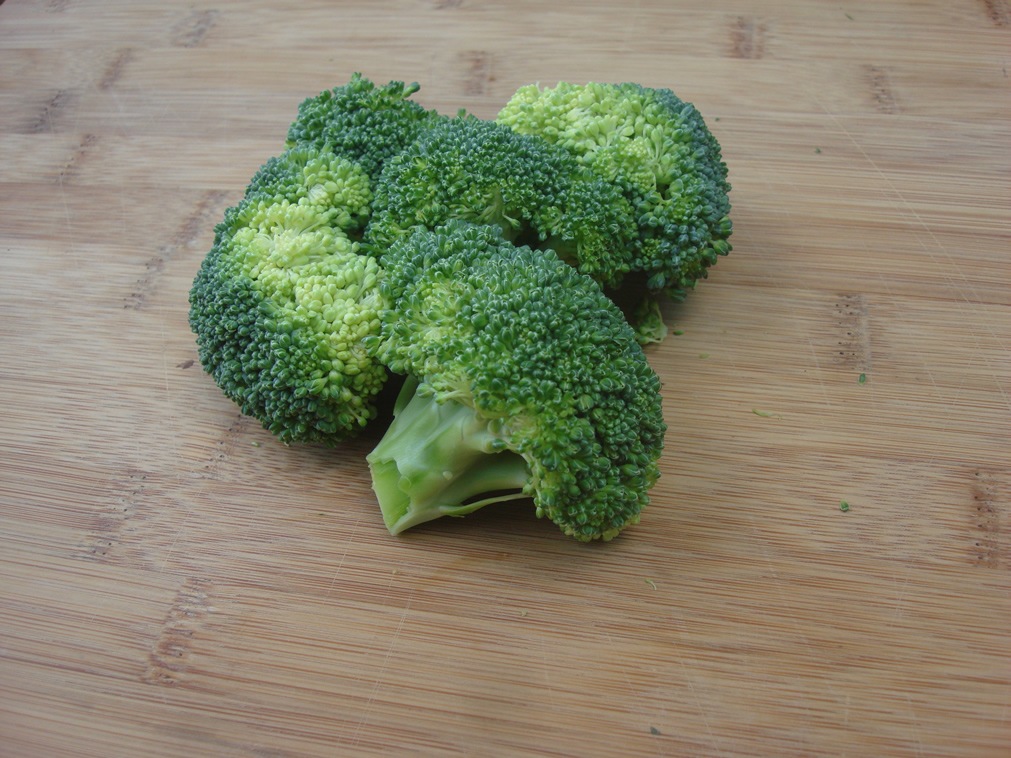
Not a lot – and you can easily add this in. Plus of course broccoli is just absolutely ridiculously good for you. Sweet.
4. Wilt Spinach into Sauces:
Spinach has to be my favourite vegetable, not just because it’s so alkaline-forming and nutritious, but because it’s magical – it just disappears!
If you’re making a pasta sauce or a curry sauce, you can wilt a serve per person into it, again, without anyone really noticing! It’s a great way to sneak it in…
You can basically take a whole packet of spinach (say 200g) and turn it into about a mouthful!
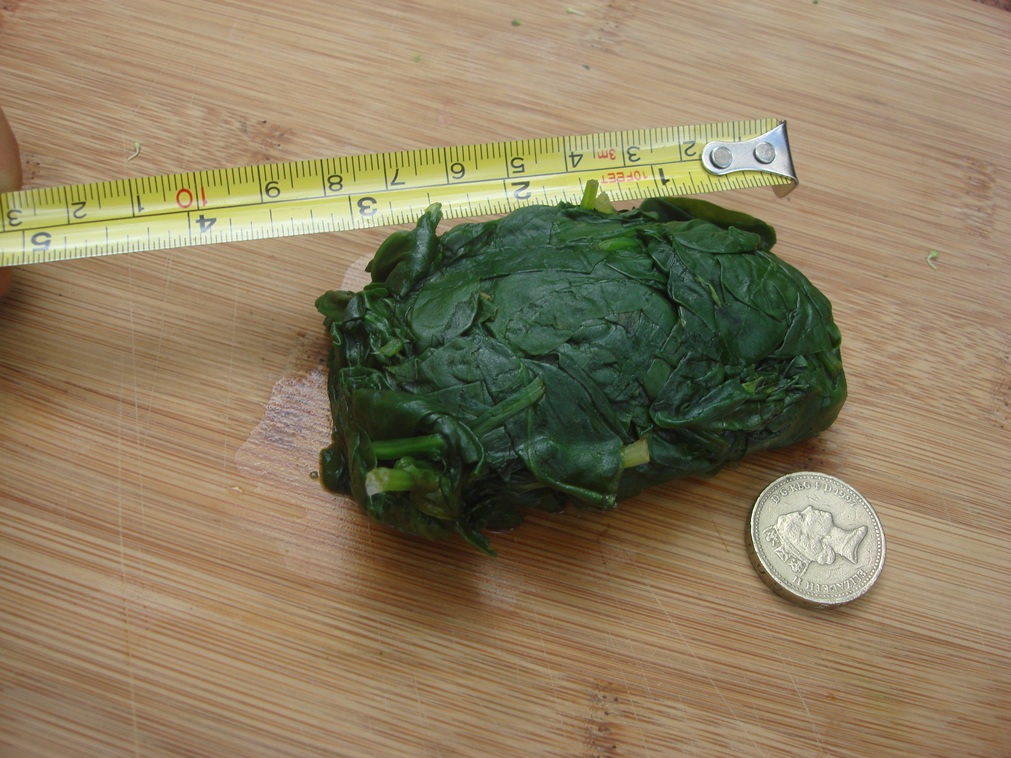
Well, not quite a mouthful, but you can take a lot and make it a little. And you can take a lot and hide it in a pasta, soup, casserole, sauce, curry and so on really easily.
Again, another easy way to get at least one extra serve of greens into your daily diet.
5. Lettuce Instead of Wraps:
This is a super-winner because it can replace a gluten-containing ingredient too – simply replace your wrap with a big lettuce leaf and wrap up your salad wrap in lettuce!
It adds freshness, variety and really a lot of flavour. You can always get funky and make a veggie San-Choi Bow, which is where the inspiration for this came from, but it’s a super simple way to get another serve in, while getting something acidic out.
Doing any one or two of these, on top of a green juice will make an unbelievable difference.
➞ Action Steps: : GET JUICING AND BLENDING! Here are some recipes to get you started: Big Bad Green Drink | Fat-Flushing Juice | All-Day Energy Smoothie | Magnesium Rich Super Smoothie
2. Healthy Fats & Oils
As we’ve already touched on above, and contrary to what we have been told for the last fifty years fat, NOT glucose is the body’s preferred source of fuel.
Just as importantly, contrary to what we’ve been told for the last fifty years SUGAR will make you fat, fat will make you THIN!. This is proven beyond any doubt now, but the low-fat (and high sugar) industry still exists, lying to all of us day by day.
If you want to experience a rapid upsurge in your sustained, all-day energy you have to embrace fats and consume them daily, plentifully.
When you start consuming healthy fats, the body not only loves you for the many beneficial effects the fats bring (increased metabolism, support for the liver and kidneys, brain health, skin health, digestive health and so on) but the body is also able to directly use this for energy production.
Fats supply twice the caloric energy as carbohydrates and are converted to energy by being split into fatty acids and glycerol. Glycerol is then converted to either glucose or glycogen. The body is easily able to do this while also utilising the fat for a plethora of other important roles.
The addition of healthy fats into the diet therefore provide an abundance of energy in two ways:
1) by being an easily accessed and readily available source of energy (converted to glucose or glycogen)
2) by healing and nourishing the important organs and glands responsible for energy production (or those functions and areas of the body who cause fatigue when not nourished properly such as the adrenals, thyroid, kidneys, liver and many areas of the brain which are all reliant on dietary sources of fat).
Which Fats & How Much?
You should be looking to consume, every day, somewhere in the region of:
- Omega 3: 2-3 tablespoons (from flax, green leafy vegetables, oily fish and so on)
- Saturated Fats: 0.5-1 tablespoons (primarily from coconut oil)
For other oils (omega 6, 9, polyunsaturated etc) there no set rule, just get a variety of foods including avocado, olive oil, nuts, seeds, leafy green vegetables and so on. These all contain a combination of omega 3, 6, 9, saturated and other fats to varying degrees.
HoW to Get Enough Fats
Getting enough of the healthy fats is relatively easy but it does take a little conscious action to begin with.
My recommendation for coconut oil, to get those critical saturated fats, is to:
- COOK with coconut oil: coconut oil is practically the only oil that does not become toxic when heated, meaning you can cook with it AND it stays healthy!
- Add it to smoothies – just blend in your daily requirement when you’re making a smoothie (or soup for that matter).
- Simply Supplement – simply take a tablespoon of coconut oil like you would any other oil supplement – it tastes great!
My recommendation to get enough omega 3 is to start with a supplement as your baseline.
It can be trickier, which is why I always recommend taking a supplement alongside your dietary intake. You can use a combination of fish oils, krill oils, flax and so on. Whichever you choose, you really do need to make sure it’s a high quality product. There is nothing worse than cheap oils – they are not only completely ineffective, but can also be counter-productive if they have oxidised.
Aside from using a supplement, look to include lots of:
- Leafy green foods
- Nuts, especially almonds
- Seeds
- If you’re not vegan/vego, you can include good quality oily fish too
Upping your oil intake will make a huge difference. I highly, highly recommend this.
➞ Action Steps: : get yourself a great quality omega 3 supplement and a jar of organic, cold pressed coconut oil. Research ways in which you can add leafy greens, nuts, seeds, flax and so on into your daily diet. A green smoothie each day is a great way to do this as you can blend greens with omega 3-containing nuts, seeds, coconut oil and so on together and you’re all set!
Here is a link to two of my smoothies that do this:
3. Super Hydration
A 5% drop in body fluids will cause a 25-30% loss of energy in most people
Dehydration is probably the leading cause of fatigue. Not only because of the fact that being dehydrated directly causes the body to work at half-capacity, but also because of the knock on effect of dehydration on your liver, kidneys, adrenals, thyroid, digestive system and more.
When you’re dehydrated you are starving your body of one of, if not THE, most important tool it needs to do it’s job.
Dehydration causes inflammation, hormonal imbalance, digestive blockage and so much more. If you want to recover from stress-related health issues, you have to be hydrated.
And if you’re not drinking AT LEAST 2-3 litres of good quality, filtered and preferably alkaline water each day, you are currently missing a massive source of energy.
You Simply HAVE to Get Hydrated & STAY Hydrated
Hydration is so simple. In fact, because it’s so simple I think most people overlook it. In fact, I know they do!
If you’re one of those people, STOP IT!
If you want to have even half-decent health & energy you HAVE to be properly hydrated.
How Much is Enough Water?
To work it out exactly, this is the official calculation:
1 litre of water per 40lbs (18k or 2.85stone) of body weight
For example, 12st = 4.2 litres per day
This, I have found, accurately works out to between 3-5 litres for most people each day.
And if you stick to this, every day, I promise you there will be a massive increase in your health, energy, mental clarity and vitality.
If yours comes out above 5 litres, aim for this amount, built up slowly over 2-3 weeks.
You can download my Hydration Cheat Sheet here which will help you out and show you how to do it.
The RIGHT Water?
It is important that you aim to get the best water you can get. The ultimate is to get alkaline water from an ionizer (see here for more info) and it’s essential that you filter to the best you can.
I actually go through all of the different ways to make your water filtered, alkaline and so on – each method with it’s pro’s and con’s in my Definitive Guide to Alkaline Water here.
But the main things to note are:
- Tap & Bottled Water Are Not an Option: both tap and bottled water are acidic, oxidising (the opposite of an antioxidant, oxidising substances and foods kill cells, cause inflammation and premature aging of the body) and inflammatory.
Both have been proven to contain hundreds of known contaminants (the Environmental Working Group’s research into tap water revealed 316 contaminants in tap water including 204 chemicals, 97 agricultural pollutants, 86 carcinogenic contaminants and 42 contaminants leached from pipes and storage tanks).
If you think bottled water is better, think again. Bottled water companies actually have LESS strict testing and controls than tap companies. Plus the bottles are stored in hormone-disrupting plastics.
Plus the environmental impact is huge. You should be planning to move away from tap and bottled water.
- Alkaline & Ionized Is Best If Possible: while filtration is critical, making your water alkaline and ionised, which means it’s not only drinking water with an alkaline pH of between 8.5-9.5, but it’s also antioxidant rich (ionised water is a stronger antioxidant than green tea) and very highly anti-inflammatory too.
I explain more in the Definitive Guide here (free download remember – it’s a very thorough guide) but can you imagine how much of a level-up it will be for you to go from drinking acidic, oxidising, inflammatory, toxin-filled tap or bottled water to filtered, clean, alkaline, antioxidant-rich, anti-inflammatory water all-day, every day? It’s worth investigating and it’s an incredible investment.
There are of course other ways to alkalise water, and I go through them all in the guide, but none are even close to as powerful as from an ioniser.
Having said all of this – drinking 3-4 litres of tap or bottled water is still FAR more beneficial to you than being dehydrated – so don’t get inertia here, get hydrating!
Hydration is perhaps the most important, effective and powerful Energy Path. For the amount of investment needed, the payoff is gigantic. Make this a priority.
➞ Action Steps: make your plan to get to 3-4 litres of water consumption every day. Download the Definitive Guide to Alkaline Water & the Hydration Cheat Sheet to help. Investigate which type of filter or method of making alkaline water is going to be right for you.
4. Increase Your Alkaline Minerals
The most alkaline minerals, which will most rapidly contribute to your body’s alkaline buffering capacity, and begin to unwind the effects of elevated stress levels are the Big Four Alkaline Minerals:
- Calcium
- Sodium
- Potassium
- Magnesium
Others include zinc, manganese, phosphorous and so on too, but if you’re eating lots of greens and other alkaline-forming foods as above, you’ll get plenty enough of these – they’re not as important as the big four.
So how can you make sure you’re getting enough of the big four?
The easy answer is: by eating an alkaline-rich, green-rich, varied, vegetable-heavy diet.
The reality is that vague advice like that isn’t going to get you anywhere. So what I’m going to do is give you a list of all of the foods that are plentiful in each of these four minerals, and then give you a bunch of recipes to help get these foods (and thus minerals) in, and then make a couple of supplement suggestions – which I highly recommend using (pick one of them) as a safety net.
Which Foods are Richest in the Primary Alkaline Minerals?
So far we have stressed the importance of keeping our body in an solid pH balanced state, which is predominantly determined by the levels of these important minerals in our body.
As these are contained in many foods we will now look at a variety of mineral rich foods, which are extremely healthy and should therefore be included into our diet as much as possible.
Here is a list of foods which we have categorised by their prime alkaline mineral content:
What Foods are Richest in Magnesium?
Spinach and Swiss chard contain the highest levels of Magnesium and are therefore the best source of magnesium.
Other very good sources are broccoli, mustard greens, summer squash, turnip greens, cucumber, green beans, kale, celery, fennel, asparagus, tomato, Brussels sprouts, peppermint and a variety of seeds like pumpkin-, sunflower-, and sesame- and flax seeds.
What Foods are Richest in Calcium?
The best sources of calcium include similarly to magnesium spinach, turnip greens, collard – and mustard greens.
The next best sources are Swiss chard, kale, goat’s milk and herbs and spices such as basil, thyme, dill seed, cinnamon and peppermint leaves.
Good sources of calcium are broccoli, celery, fennel, Brussels sprouts, sesame seeds, cabbage, romaine lettuce, summer squash, green beans, garlic and asparagus. Herbs like parsley, oregano, rosemary and kelp are also good sources of calcium.
Dairy products are generally high in calcium; however we would not recommend them as sources of calcium due to their acidifying effects on our body. We would recommend goat’s milk as a healthier and ‘mildly alkaline’ alternative to cow’s milk products.
What Foods are Richest in Potassium?
Potassium is abundant in many different types of foods and can easily be found in vegetables.
Great sources of Potassium include spinach and chard.
Foods with high levels of Potassium include fennel, broccoli, Brussels sprouts, kale, mustard greens, aubergine, winter squash and tomatoes.
Other good sources are bell pepper, ginger root, avocado, cucumber, parsley, cauliflower and cabbage.
Alkaline Mineral Supplements
There are three high quality alkaline mineral supplements I recommend and you can use whichever you prefer based on tastebuds and budget:
I don’t have any affiliation with any of those companies, I just like the products.
➞ Action Steps: incorporate all of the above foods as often as possible – with these recipes acting as your kickstart: Magnesium – Magnesium Rich Super Smoothie | Tomato and Asparagus Soup | Shredded Brussels & Kale — Potassium: Alkaline Power Smoothie | Spicy Aubergine Stew | Turmeric & Ginger Tea | — Calcium: Broccoli & Pumpkin Soup | Coconut Curry | Super Breakfast Bowl
Preventing Stress #2: Mindset & Stress Reaction
As I mentioned above, I am not an expert on mindset, or psychology. However, being an entrepreneur/small business owner for the past 15 years, you can’t help but face periods of prolonged stress, and so I have had some experience in my personal life of dealing with this.
The first time it really hit me was in 2012-13 and I remember it so clearly. I basically hardly slept for about a year.
It was a stressful time. And you know what?
I made up 99% of it.
It was all in my head.
Fear of things that hadn’t (and didn’t) happen. Worry, stress, anxiety – these are all powerful emotions that can get away from you.
My fix was meditation and mentorship.
Yours could be something different.
It could be yoga, exercise, going on a retreat…who knows. We are all different.
However, one thing I have noticed in those around me who I would consider role models for not just success, but quality of life, and the mental game is that every one of them practices meditation.
Tim Ferris, in doing his 200+ podcast episodes of the Tim Ferris Show, which then became his book Tools of Titans, found the same thing – but at an even higher level. He found in 99% of the people he interviewed who are all peak performers, athletes, billionaires, people who are changing the world – they all practiced a form of meditation.
I cannot recommend this highly enough.
If you are scared of meditation, think you can’t do it, think it’s for hippies or new-age yogis…think again.
It’s a proven, scientific way to rewire the brain, undo the years of stress, and make it harder (much harder) for that cortisol ON switch to ever be switched again.
You cannot stop stressful events from happening, but you CAN change the way you react to them
.
This is what meditation, particularly mindfulness meditation, is about.
Again, I strongly recommend you try it out and the easiest, quickest way to do this is with the Headspace app.
I have no affiliation with Headspace, and I am sure there are other good apps or programs out there too.
But you can try their ‘Take Ten’ program for free, which is 10 minutes a day for 10 days – and just see for yourself.
The creator and co-founder Andy Puddicombe talks all about this here in his Ted Talk:
Please take a few minutes to watch that – it’s a game changer.
Another very useful tool I’ve recently discovered…
If you worry, get caught up in your own ‘fake news’ of what could go wrong, and tend to wake at night with “the fear of the middle of the night” (you know what I’m talking about), you might also like this.
It’s Tim Ferris’ ‘Fear Setting’ exercise.
I found this super useful in that it helps me to find calm and ease whenever a fear over a particular situation, project or decision comes up. I can compartmentalise it accurately and realistically and instantly get the voice in my head that says, ‘There is Nothing to Worry About Here’.
I recommend you check this short video out too:
Stress Comes From Both Angles
You have to hit them both if you want to erase the damage stress (chronically elevated cortisol) is doing to your body. You have to stop the source (the worry, anxiety, stress emotions AND the diet-induced acidosis) and also repair your body too (by practicing calm, positive emotions and eating more alkaline!).
Both of these efforts together will bring exponential results that will repay you with compound interest.
If you suffer from fatigue, digestive issues, adrenal or thyroid issues, immune issues, weight (under OR over), skin conditions or more – stress could be at the root.
So let’s shut it out and heal, nourish, rebalance and regenerate our health!
Ross





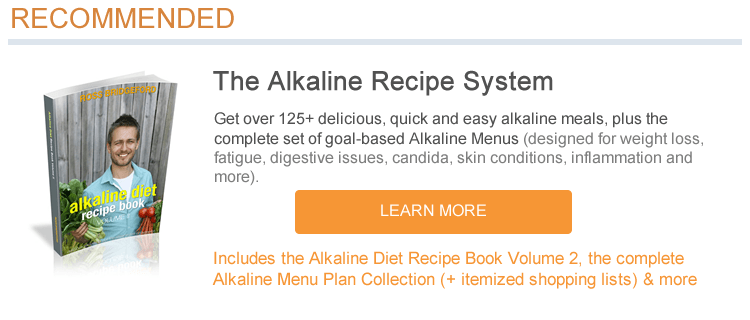

Know anything about rhumatoid arthritis?